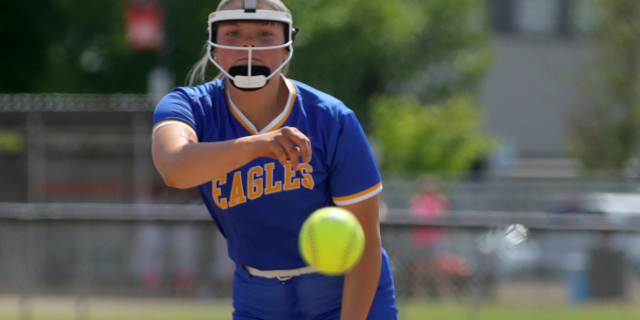On Their Way — Fingerling salmon released in Wood and Williamson rivers
Published 1:00 pm Sunday, April 16, 2023

- Spring Chinook fingerlings destined for the Williamson River.
WILLIAMSON RIVER — 7 Alpha Delta 8 is on its way.
7 Alpha Delta 8, or 7AD8, is one of the 701 spring Chinook salmon fingerlings that was equipped with an acoustic tag and tracking number earlier this month. It was among the 351 six-inch-long fingerlings released Wednesday into the Williamson River at Collier State Park. Later that day another 352 tagged fingerlings were released into the Wood River at the Wood River Day Use Area. Both rivers are tributaries to Upper Klamath Lake and, eventually, the Klamath River.
“They’re booking it downstream!” shouted Rob Roninger, a BLM fisheries biologist, as he unloaded a bucket of wriggling fingerlings into the Williamson.
7AD8 and the others were expected to navigate the two rivers and reach Upper Klamath Lake within two or three days. The acoustic tags, which are about the size of a grain of rice, will help track their progress, and determine how many survive, in coming weeks and months. A similar study done last year indicated 94% of the spring Chinook survived past the Link River and that another 92% passed the Keno Dam.
Fish biologists with the Oregon Department of Fish and Wildlife, Bureau of Land Management and other agencies expect the fingerlings will be moving past the Link River Dam and into Lake Ewauna and farther downstream along the headwaters of the Klamath River to and past the Keno Dam en route to the John C. Boyle Dam.
It’s all part of a multi-agency study aimed at learning whether spring Chinook salmon can eventually reach the Pacific Ocean, then return upstream to reproduce after the four large Klamath River dams — John C. Boyle, Copco 1 and 2, and Iron Gate — are removed in the next 1-1/2 years.
Roninger and others, including University of California-Davis doctoral student Rachelle Tallman, Collier State Park Manager Karen Crawford, Klamath Tribe aqua-culturalist Carlie Sharpes, and Lottie Riddle, Klamath Tribes hydrological technician, took turns, often wading waist deep into the Williamson carrying nets with the tiny fingerlings. The fish had been collected earlier that morning from the Klamath Fish Hatchery near Fort Klamath, placed in a 300-gallon transport truck tank and taken to Collier, where Mark Hereford, ODFW’s Klamath Falls-based fisheries reintroduction biologist, used a net to scoop fingerlings into buckets that were carried to the river.
The acoustic telemetry tags were carefully placed into the fingerlings at the Klamath Fish Hatchery a week earlier and then placed into net pens, one for the Williamson, another for the Wood and a third for the Oregon State University Aquatic Health Laboratory. The water temperatures at the hatchery are 46 degrees, slightly warmer than the Williamson River’s 43 degrees and the Wood River’s 42.
“That’s a good temperature for these guys,” Tallman said as the fingerlings were placed in the Williamson. “They like it cold.”
After unloading the first batch into the Williamson, the group returned to the Klamath Fish Hatchery, loaded fingerlings from a net pen designated for the Wood River, drove to the day use area and repeated the process.
“Everything went well,” Hereford said after the fingerlings were placed in the Wood.
He said the acoustic tags, which cost about $250 each, will allow fisheries biologists to track the fingerlings as they move past receivers also being used to track endangered Lost River and shortnose suckers, or C’waam and Koptu. The ongoing studies — more releases of spring Chinook fingerlings with other tracking devices are planned in coming weeks and months.
Other Klamath River fish, including fall-run Chinook, steelhead, coho and Pacific lamprey, exist below the Iron Gate Dam, the most downstream of the four dams, it’s believed those species will repopulate on their own. Spring-run Chinook, however, are not expected to re-populate in tributaries above Upper Klamath Lake, so a series of studies, including those involving the 701 acoustic tagged fingerlings, are being done to determine how they navigate streams and rivers.
It’s hoped that 7AD8 and the others will help to answer those questions.






